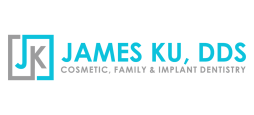RESTORATIVE DENTISTRY
Restorative dentistry encompasses the techniques and treatments that help to make a damaged tooth whole again so that it can resume its function in the smile, as well as improve the patient’s appearance. Restorative dentistry may also refer to appliances that are used to replace missing teeth, such as dental bridges. These treatments are typically necessary when a tooth has deteriorated due to decay or been compromised by an injury. The extent of the damage will determine the extent of the restoration. Some restorative dentistry treatments are more conservative and completed in a single appointment, while others may be more involved and required multiple appointments. Dr. Ku will advise you about the specifics of your treatment plan at your initial consultation.
Fillings, Inlays, and Onlays
The most conservative restorations are fillings, inlays, and onlays. Fillings are the smallest and used when the decayed tooth material can be easily removed and replaced with composite (tooth-colored) materials. Inlays are used for cavities that may be too large to correct with a standard filling but aren’t large enough to require a crown. An inlay is shaped to fit the space of the decayed tooth material that was removed and then bonded into that spot. Onlays are slightly larger than inlays and also cover a cusp of the tooth in addition to replacing decayed material.
Dental Crowns
 Dental crowns are tooth-shaped caps that cover the entire surface of the tooth, and they are necessary when the damage caused by decay is too severe or extensive to be adequately repaired with a filling, inlay or onlay. Dental crowns are also placed on teeth that have been treated with root canal therapy in order to give them additional protection from breaking. Dental crowns are usually placed over the course of two appointments. At the first appointment, Dr. Ku will collect all of the information needed for the crown’s specifications and prepare the tooth for crown placement. When the crown is ready, the patient will return to the office to have it bonded to the teeth.
Dental crowns are tooth-shaped caps that cover the entire surface of the tooth, and they are necessary when the damage caused by decay is too severe or extensive to be adequately repaired with a filling, inlay or onlay. Dental crowns are also placed on teeth that have been treated with root canal therapy in order to give them additional protection from breaking. Dental crowns are usually placed over the course of two appointments. At the first appointment, Dr. Ku will collect all of the information needed for the crown’s specifications and prepare the tooth for crown placement. When the crown is ready, the patient will return to the office to have it bonded to the teeth.
Dental Bridges
Dental bridges are used to replace missing teeth, and they consist of crowns placed on the teeth adjoining the gap that support a pontic (artificial crown). Like dental crowns, dental bridges can be tailored to match a patient’s biological teeth to blend in more with the patient’s natural smile.
To learn more about our restorative dental services, call our office and speak to one of our staff members for additional information or to schedule an appointment.



